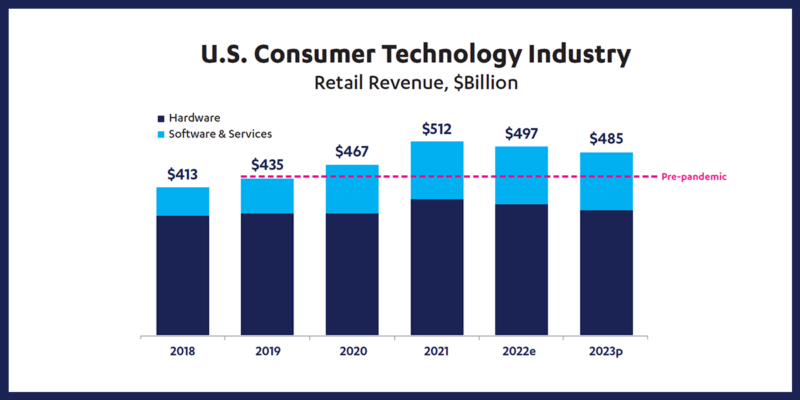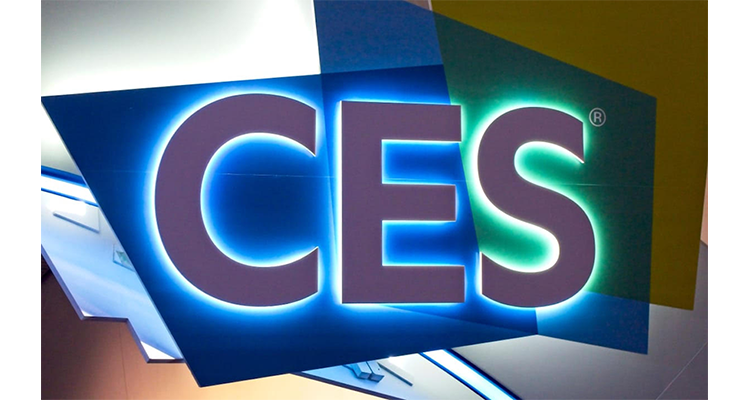Observations from CES
Having spent two days wandering around the 40th annual Consumer Electronics Show (CES) in Vegas this week, I thought I would just ramble (or professionally called Blog) about what I noticed (or didn’t notice) that could (and probably will) affect the AV market, eventually.
Gaming Projectors: I am convinced this newly emerging market will eventually dominate the projection display market in volume. And, I don’t think it will take too long either – maybe 2-3 years TOPS. TI’s leading the pack with their partners using their DLP technology to produce everything from hand-held, battery operated projectors that list for less than $600 to round, cylindrical and bar-shaped projectors that look like aliens. And, some of them are literally designed to lie on a floor and project on the ceiling. The coolest has to be the Philips Ujoy (an SVGA resolution game projector).
Kids will love this stuff. And the kids I am talking about are the teens and 20-somethings – the largest buyers of PlayStation 3’s, Xbox’s and Nintendo Wii’s. And, these new gaming projectors start at only $599. At those prices, these things will fly off the shelf at places like Circuit City (the first place you’ll see a gaming projector kiosk this spring).But, before you blow this market off, the fastest growing segment of buyers of the video game industry is (drum-roll, please) 30-somethings. And, they have money, want home theaters and higher-end projectors, and can afford to take gaming environments to the next level. So, watch this market closely as it’s going to be a cash cow.
Blu-ray was everywhere: Barely any booth was promoting HD-DVD (other than the barely visible HD-DVD booth) whereas the Blu-ray logo was everywhere. I counted more than 23 booths with Blu-ray supporting signage – and that included everyone from Sony, to Sharp, Panasonic to Samsung. And, the count for HD-DVD? Two! There was one mentionable however – it was the HD combo player from LG. Although it worked, looks cool, even the LG execs told me privately that they believed Blu-ray would win the HD disc war.
Microsoft is pathetically trying to catch up with Apple: In an almost plagiaristic reproduction, the long-awaited update to Windows is nothing more than almost OS-X (Apple’s 3-year old operating system). One thing for which you can give Microsoft credit is its integration to the Internet and the plethora of sites we seem to use every day. This is one area that they are outshining Apple’s system. In addition, the all-new Microsoft Office seems like the killer office app. But, will it be enough? It’s clear that Microsoft doesn’t think so as they showed more hardware products than ever before. Long considered a software giant, you’ll now have to count Microsoft as a hardware vendor. MP3 players, home remote controls, car radios and a new product/service that will be interesting to watch called IPTV.
It’s not totally clear how, exactly, one acquires IPTV, but basically what it is is CableTV via the Internet. Using a set-top box, you connect to the Internet and stream all your channels (in NTSC and HD) via a broadband connection. It looks a like a cross between a cable set-top box and TiVo.
Big, Big LCDs: How the heck you’d get a 108″ LCD monitor into a home – much less mount it on the ceiling, is beyond me. It will fit through the front door, but will not be cable to navigate anything but straight shots throughout the home – no 90-degree turns for sure. But, Sharp showed the world’s largest, single-panel LCD at 108″ diagonal. A true 1080p display with a heck of a lot less noise than Panasonic’s puny 103″ plasma, the new giant Sharp LCD had no price, but it was made clear that the most we can do is get a finder’s fee for specifying it. They take care of the rest. It will be interesting when a Sharp dealer specifies a bunch of these on the 50th floor of a NYC high-rise – I can just see this giant crane lifting 20 of these 108″ LCD’s to the conference room floors.
In all seriousness, these giant flat-sceen displays certainly make you wonder the effect these may, eventually, have on the front screen projection market. Right now, none, as they are 10-20 times the price. But, price always comes down…
LED-driven rear-screen projectors: TI’s latest DLP-based projection sets feature 20,000-hour LED lamps (one red, one green and one blue with a single-chip DMD). The one on the show floor was specified at over 100,000:1 contrast ratio and I must say, it looked incredible. It wasn’t too bright, but it had blacker blacks (dare I say it) than any CRT I remember seeing. I think we’ll see LEDs in the mid-level price range soon – with standard lamps leading the pack at the higher ends of the market. And, there was a lot of talk about laser-based light sources maybe making a debut in 2007.
Funny Sony Booth: I enjoyed the Sony booth for more than the product introductions – the most impressive of which was the new LocationFree boxes that allow you to watch your home TV, control your cable box or TiVo/DVR from either a PC or MAC. Aimed at Sling Media who currently owns darn-near 100% of that place-shifting TV market, Sony’s new LocationFree series include different versions that allow you to watch your TV on anything from a computer, a phone and another TV in another home – all you need is a network connection.
But, what was amusing was watching the live in-booth presentations and how they were controlled. While Sony had a huge section of Sony-branded VAIO laptops and PCs that they marketed as more than capable of performing any task you need, the three people running the show in the sound booth all had Apple PowerBooks! Hum, if I were Sony, I would have found a way to at least make it appear as though their own booth could be run using Sony PCs – wouldn’t you?
InFocus enters projector/DVD combo market: While the big focus was on HD projection, InFocus debuted their IN1, a 480p-based DLP projector with a built-in DVD player and a cool videogame docking station. The 500-lumen projector is priced at $500, and that’s an aggressive move for InFocus – a company trying to re-find its identity, again. One cool feature of the IN1 is a mirror adapter that attaches to the front of the lens that literally allows the projector to display anything connected on the ceiling – again, a feature aimed at gaming/kids. But, it’s not a bad idea for a bedroom – I’ll leave it at that…
Oh, something else that’s worth mentioning from the InFocus booth. They lowered the price of their flagship home cinema projector, the 720p-based SP777, to $9995. When it debuted two years ago, it was over $30,000.
The worst-looking display award: That has to go to LG and their 102″ LCD. It was noisy, choppy and had terrible contrast ratio. Now, some of that could have easily been source material, but, heck, they were debuting a combo HD-DVD and Blu-ray disc player so why not use that? Err, come to think of it, maybe they had an HD-DVD movie showing – that would explain the image quality. OK, so, I will reserve my judgment on the display until I see it again.
The first, shipping, 1080p single-chip home theater projector: BENQ showed their much-anticipated W10000 (given that number based on the specified 10,000:1 contrast ratio). Priced at $5999, it will be interesting to see how this projector fares against the 3LCD-based Sony VPL-VW50 and EPSON’s ProCinema 1080 – both priced at $1000 less than the BENQ (and the EPSON model includes a replacement lamp!). It looked very good, but then again, it was in the room with the mostly SVGA-based gaming projectors.
HDMI rules, but network’s all the talk: Not a single HD product that I saw on the show floor was connected any other way than HDMI. It’s clear that the concerns over the non-captive (in the same way that USB can slip out of its port) HDMI connector are not concerns anymore. Component video is close to dying as even many of the new HD-handicams had an HDMI port.
But, that said, just about everyone talked about sending video, audio and content in general over the network, the Internet and the LAN. 802.11n was the buzz – especially after everyone on Tuesday heard about Apple CEO Steve Job’s announcement at MacWorld (held simultaneously in San Francisco this year) official introduction of the iTV, now called Apple TV – Apple’s wireless, 720p, HDMI-based content receiver and storage device.
What is Apple TV: Well, imagine your entire iTunes library of songs, TV shows and movies made available to you anywhere in your house (on ANY TV) without having to move your iMac or MacBook – and all in 720p HD format! For $299.
Well, that’s it. Shipping in February, the Apple TV (originally called iTV) uses 802.11n wireless technology to receive content from iTunes (from up to five different computers in your home) and it can either play it in real-time (as it’s receiving the content) or you can store it on the 40Gig hard drive and play it back whenever or wherever you want.
This changes TV viewing and movie watching, forever. Sure, TiVo already did this, right? Well, that’s assuming you remember to set your TiVo to record everything you want to watch. As Apple builds a huge library of readily available content from everything from 1980’s-based TV shows to movies that just came out on DVD, you can watch pretty much whatever you want. Forget to record last week’s episode of The Office? (Or maybe the football game ran over and your DVR – as it often does, recorded the end of the game as the first 8 minutes of The Office.)
Well, before Apple TV, you were out of luck. But, as Apple posts every episode of The Office every week, you can just go download it and watch it whenever you want, wherever you want.
Ok, I realize the buzz in the market right now is 1080i and the Apple box is only 720p. But, truth is, the bandwidth and resolution of the two is identical – one is interlaced and one is not (progressive). So, on TV shows this may not matter. But, I agree, Apple needs to get this up to 1080 as soon as technically possible – and I am sure they will. They’re already taxing the current wireless standards getting 720p out of the Apple TV. But, I’m sure they know they need 1080 eventually.
Finally, Best Buy for Business: Watch out, Best Buy’s coming after you. They’ve put together a plan and company called Best Buy for Business to sell everything for media distribution and control. The Home Media PCs (HP’s Life|ware system) is designed to allow you to compute, distribute content and play stuff anywhere in your home while also allowing you to control your lights, whole house audio system (using Russound) with keypads in every room and a color touch-screen you can walk around the house with – all for a packaged price of $15,000. Yes, that includes installation. It will be rolled out nationally by April.
But, before you count this a guaranteed success, remember that the HP Home Media PC that this entire system runs on is Windows-based (and according to Crestron, they recently won the coveted national contract to outfit Microsoft’s conference centers with Crestron control systems). So, if they (Microsoft) don’t have complete faith in their own OS, maybe we shouldn’t either…
Food for thought…





